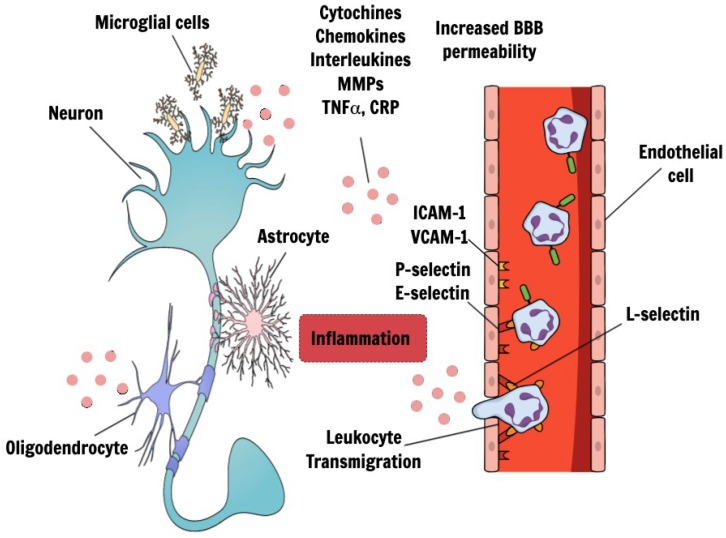Figure 1.
Endothelial dysfunction and cerebral inflammatory response in VCID. Endothelial dysfunction, observed in VCID, could lead to an increase in BBB permeability, a subsequent exposure of neural cells to harmful substances and a rise of inflammatory environment. The result is an activation of glial cells in the CNS, which finally lead to neuron damage. During inflammatory response, leukocytes are recruited from the circulation into the extravascular space. The activation of endothelial cells lead to the expression of adhesion molecules on their surfaces, allowing the binding to reciprocal molecules on the surfaces of circulating leukocytes. Indeed, activated endothelial cells up-regulate the expression of adhesion molecules such as intercellular adhesion molecule-1 (ICAM-1), vascular cell adhesion molecule-1 (VCAM-1) and selectins (P-selectin, E-selectin). L-selectin is mainly expressed on leukocytes. The increased BBB permeability lead to infiltration of inflammatory factors like interleukins, chemokines, cytochines, MMPs, TNFα, TLR4, CRP. Upon entry into the brain, these inflammatory factors can exacerbate white matter damage (demyelination, axonal loss, oligodendrocyte degeneration), cause neurodegeneration and cell death as well as enhance neuroglial inflammation. (VCID: vascular cognitive impairment and dementia; BBB: blood–brain barrier; CNS: central nervous system; MMPs: TNFα: Tumor necrosis factor; CRP: C-reactive protein).

